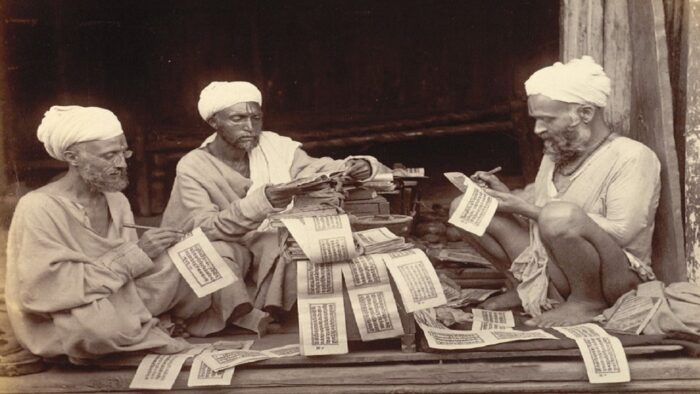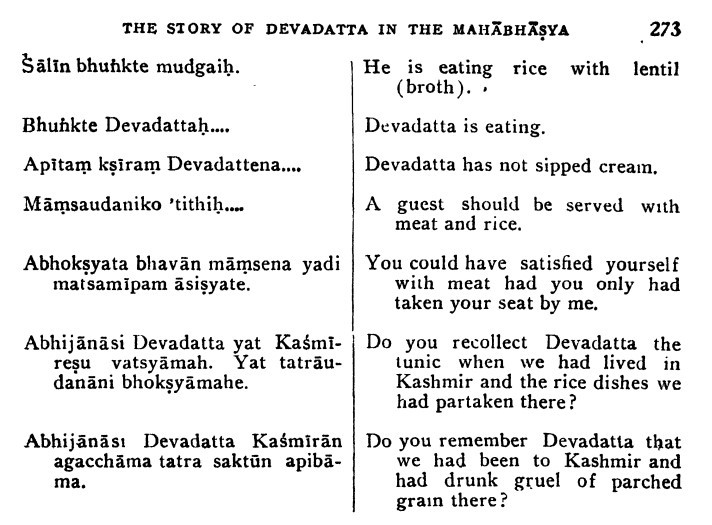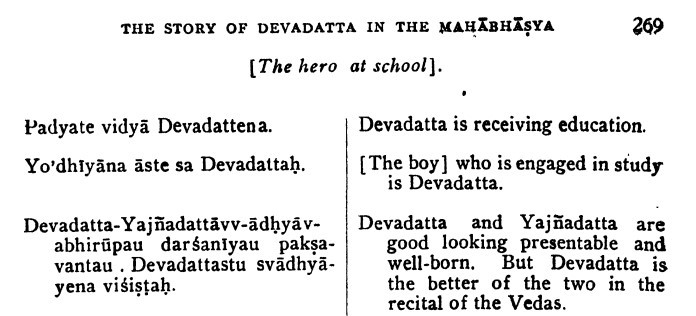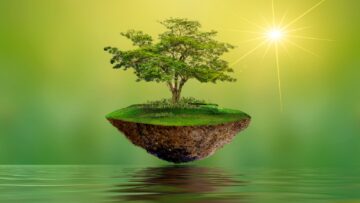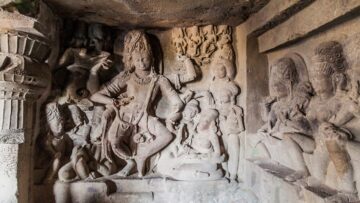Abstract[1]
Is Patañjali’s Mahābhāṣya the earliest Indian source to attest to the word Kashmir? Does Kashmir in the Mahābhāṣya occur in a context that only reveals information about rice cultivation in the valley? Is Kashmir not mentioned anywhere in the Vedic literature? Did Pāṇini call the people of Kashmir Kashmirikas? If one were to look for answers to these questions in the Brill’s Encyclopedia of Hinduism—which claims in its preface that the depth and breadth of information provided in it are unmatched by any reference work on Hinduism—and Wikipedia, one will find statements that answer the above questions in the near-affirmative. This paper will foreground evidence from Aṣṭādaśavidyā texts (the lack of evidence in one case) and secondary literature that problematises answers to the above questions in the near-affirmative. Finally, this paper will add a new data point to the considerations already present in a recently published paper (Landscape in the Nāṭyaśāstra and clues to its spatial origin: A study in 2019) that strengthens the case for Kashmir when thinking about the spatial origins of the Nāṭyaśāstra.
I. Preliminaries
This paper comprises three sections: Preliminaries, Analysis, and Conclusion. In Preliminaries, I will include details that enhance the fidelity of the title and the abstract. The title of this paper mentions Brill’s Encyclopedia of Hinduism (BEOH henceforth) and Wikipedia. This paper engages with articles in both these sources titled “Kashmir”[2]. Alexis Sanderson is the author of the article on Kashmir in BEOH. Aṣṭādaśavidyā[3] in the abstract refers to one system of Indic knowledge described in the viṣṇu purāṇa.[4] By the term Indic, used in the previous sentence, I roughly mean “of or relating to the Indian subcontinent”[5] but do not imply only “of, relating to, or constituting the Indo-Aryan branch of the Indo-European languages.”[6] Finally, sentences that are alluded to as “near affirmative” answers to the questions in the abstract are the following:
Excerpt 1: “Pāṇini called the people of Kashmir Kashmirikas.”[7] [Emphasis mine]
Excerpt 2: “Kashmir is mentioned nowhere in Vedic literature; and it appears in no Indian source before Patañjali’s Mahābhāṣya of circa 150 BCE (see language and linguistics), where it occurs in a context that reveals only that rice was already being cultivated in the valley at that time.”[8] [Emphasis mine]
II. Analysis
II.1: Kashmir and Pāṇini
As seen in Excerpt 1, a statement in a Wikipedia entry titled Kashmir claims that “Pāṇini called the people of Kashmir Kashmirikas.” Of the three endnotes [10], [11], [12] attached to this statement in Wikipedia, the one numbered [10] leads to page 64 of the book India and Central Asia: Classical to Contemporary Periods where Kashmirikas is mentioned.
The problem, though, is that neither Kaśmīrika (कश्मीरिक) nor Kāśmīrika (काश्मीरिक), insofar as I have seen at least, is attested as-is in any of the works attributed by most to Pāṇini, namely the Aṣṭādhyāyī (sūtrapāṭhaḥ, dhātupāṭhaḥ, gaṇapāṭhaḥ, uṇādipāṭhaḥ), pāṇinīyaśikṣā, and pāṇinīyaliṅgānuśāsanam. What one can find is four instances of kaśmīra (कश्मीर) in the Gaṇapāṭhaḥ [9]:
भर्गादिः (४.१.१७८)
भर्ग । करूष । केकय । कश्मीर । साल्व । सुस्थाल । उरस् । कौरव्य ॥ (70)
संकाशादिः (४.२.८०)
संकाश । कपिल । कश्मीर । समीर । सुरसेन । सरक । सूर । सुपथिन्पन्थ च । यूप । यूथ । अंश । अङ्क । नासा । पलित । अनु । नाश । अश्मन् । कूट । मलिन । दश । कुम्भ । शीर्ष । चिरन्त । विरत । समल । सीर । पञ्जर । मन्थ । नल । रोमन् । लोमन् । पुलिन । सुपरि । कटिप । सकर्णक । वृष्टि । तीर्थ । अगस्ति । विकर । नासिका ॥ (93)
कच्छादिः (४.२.१३३)
कच्छ । सिन्धु । वर्णु । गन्धार । मधुमत् । कम्बोज । कश्मीर । साल्व । कुरु । अनुशण्ड । द्वीप । अनूप । अजवाह । विजापक । कलूतर । रङ्कु ॥ (110)
सिन्ध्वादिः (४.३.९३)
सिन्धु । वर्णु । मधुमत् । कम्बोज । साल्व । कश्मीर । गन्धार । किष्किन्धा । उरसा । दरद । दरद् । गन्दिका ॥ (119)[10]
Even if one were to accommodate, without agreeing with, the view that the Gaṇapāṭhaḥ was not Pāṇinian but pre-Pāṇinian[11], that would only make the instances of kaśmīra (कश्मीर) in the Gaṇapāṭhaḥ older than the time Pāṇini composed the Aṣṭādhyāyī.
II.2: Kashmir and Patañjali:
In II.1 above, we have seen, amongst other things, how kaśmīra (कश्मीर) is at least old as the time of Pāṇini. I will now analyze Alexis Sanderson’s view in Excerpt 2 above. If, as we just saw in II.1, kaśmīra (कश्मीर) is at least old as Pāṇini, how can Sanderson claim that
1) Kashmir is not mentioned anywhere in the Vedic literature and
2) it appears in no Indian source before the Mahābhāṣya?
Let me take the second point first. There could be a few possibilities here:
i) Sanderson thinks that the Mahābhāṣya was composed before the Gaṇapāṭhaḥ, which would be plain wrong.
ii) He does not know of kaśmīra in the Gaṇapāṭhaḥ, which, while possible, and if so, might require him to consider revising his view.
iii) Neither (i) nor (ii).
If iii, is he making this claim based on the territory implied in his usage of the word Indian? In other words, is Sanderson saying that kaśmīra appears in no Indian source before the Mahābhāṣya because he thinks the Gaṇapāṭhaḥ was composed in a place outside the territory of the Indian nation after 1947 CE? If this is his reason and if he knows of kaśmīra in the Gaṇapāṭhaḥ, then he should have at least mentioned both (his reason and his knowledge of kaśmīra in the Gaṇapāṭhaḥ) and added where he thinks the Gaṇapāṭhaḥ was composed. To know about kaśmīra in the Gaṇapāṭhaḥ and still not mention it when making statements about its absence before the Mahābhāṣya is, at the very least, misleading.
Now to the first point. What is at least as problematic, if not more, especially when writing for an article in an encyclopedia on Hinduism, is to put the Mahābhāṣya itself (and by omission, the Gaṇapāṭhaḥ too) outside the ambit of “Vedic literature.” Such a view is in direct conflict with an emic history of “Hinduism” (the -ism part of which is deeply problematic given its colonial roots) in which Vyākaraṇa is an aṅga of the Veda, one of the six Vedāṅga-s, as part of at least two Indic systems of knowledge (vidyāsthānam)[12]: Aṣṭādaśavidyā & Caturdaśavidyā.[13]
Engaging with Sanderson’s view is significant for at least one more reason. Consider how historian Mridu Rai has cited Sanderson in the section ‘First Peoples’ and the ownership of Kashmir in her recent article Narratives from exile: Kashmiri Pandits and their construction of the past in the book Kashmir and the future of South Asia (2021). Given that Rai has not bothered to write—at least not before the epochal book The Making of Early Kashmir (2018)—about the pre-Islamic history of Kashmir even as she theorised about some facets of Kashmir’s history, and her future, it is unsurprising that her recent treatment is “thin.” In a section titled as sweepingly as ‘First Peoples’ and the ownership of Kashmir, she, essentially, merely cites Sanderson’s comparison of the “origin myth” of Kashmir as found in the “Mulasarvastivadavinaya” (1st or 2nd CE according to Rai) and the “Nilamata Purana,” to allege a (so-called) Brahmanical appropriation of a supposedly Buddhist myth. Unlike Sanderson, Rai’s article has no place even for Patañjali’s Mahābhāṣya, leave alone Pāṇini and the Gaṇapāṭhaḥ, both of which belong to a time before the time Mulasarvastivadavinaya was supposed to have been composed (namely, 1st or 2nd century CE). What else can it be, if not her privilege, that Rai can hurl insufficiently substantiated charges [such as “privileged,” (Rai, 2021, 93) “thin,” (ibid., 97) “ahistorical,” (ibid., 99) and more] when her own engagement with the pre-Islamic history of Kashmir (which is at least twice the duration of Islam’s history in Kashmir) is as thin as it is.
I return to Sanderson’s view, to the third part of excerpt 2. According to him, Kashmir occurs in the Mahābhāṣya in a “context that reveals only that rice was already being cultivated in the valley at that time.” My concern is with his usage of the word “only.” Let me explain. Let us first see the instances of ‘kaśmīra‘ in the Mahābhāṣya. I could find the following:
(P_1,1.44.8) KA_I,109.4-110.8 Ro_I,340-341 {16/34} prāpte tāvat : abhijānāsi devadatta yat kaśmīreṣu vatsyāmaḥ , yat kaśmīreṣu avasāma , yat tatra odanān bhokṣyāmahe , yat tatra odanān abhuñjmahi
(P_1,1.44.8) KA_I,109.4-110.8 Ro_I,340-341 {17/34} aprāpte : abhijānāsi devadatta kaśmīrān gamiṣyāmaḥ , kaśmīrān agacchāma , tatra odanām bhokṣyāmahe, tatra odanān abhuñjmahi
(P_3,2.114) KA_II,119.9-17 Ro_III,269-270 {13/14} abhijānāsi devadatta yat kaśmīrān gamiṣyāmaḥ yat kaśmīrān agacchāma yat tatra odanam bhokṣyāmahe yat tatra odanam abhuñjmahi
(P_3,2.114) KA_II,119.9-17 Ro_III,269-270 {14/14} abhijānāsi devadatta kaśmīrān gamiṣyāmaḥ kaśmīrān agacchāma tatra odanam bhokṣyāmahe tatra odanam abhuñjmahi[14]
Now consider Sukumar Sen’s translations:
From the last two translations in the image above, which allude to Kashmir, it should be clear that they reveal more than only the fact that rice was already being cultivated in Kashmir at that time. Both of them allude to Devadatta. They tell us that someone was asking Devadatta if he remembered their journey to Kashmir, where they lived, ate rice dishes, and drank gruel of parched grain. What else does the Mahābhāṣya tell us about Devadatta? It reveals that Devadatta’s family had come from Srughna; he belonged to the clan of Garga; he lived in Pāṭaliputra; he recited Vedas; and that at least one host might have considered him to be a Brahman.
Even if this story of Devadatta in the Mahābhāṣya is only a myth, we have here a story of a person who lived in Pāṭaliputra, who could recite the Vedas and who had, at some point in time, visited Kashmir. This story is attested in the Mahābhāṣya, that Sanderson pegs at circa 150 BCE, which is at least one and half centuries before the Mūlasarvāstivādavinaya was compiled, which Mridu Rai has pegged to 1st or 2nd century CE. While the Devadatta story, even if a myth, is not a myth about the origin of Kashmir (like in the Mūlasarvāstivādavinaya[19] or the Nīlamatapurāṇa), it is nevertheless a story in a non-Buddhist text of the Vedic tradition, dated to a period before the earliest mention of Kashmir in a Buddhist text, and which tells us a story of a Veda-chanting person’s travel to Kashmir. That is certainly more than only information about rice having already been cultivated in the valley, in contradistinction to what Sanderson has posited.
Is that all one can glean about the relationship between Kashmir and Patañjali? To conclude so would be to, in my view at least, miss almost completely the key conclusions of 164 pages of writing across three articles—1) Patañjali’s Mahābhāṣya as a Key to Happy Kashmir 2) Gonardīya, Goṇikā-Putra, Patañjali, and Gonandīya 3) Patañjali: A Kashmirian—written by scholar Ashok Aklujkar and published first in 2008 as part of the book Linguistic Traditions of Kashmir. Aklujkar’s multi-disciplinary examination of the possibility of Patañjali being a Kashmirian is an effort whose depth and breadth of information appears unmatched to date. The absence of this topic (Patañjali: A Kashmirian) and Aklujkar’s analysis is glaringly conspicuous in an entry on Kashmir in an Encyclopedia of Hinduism, which is touted as an Encyclopedia whose depth and breadth of information are unmatched by any reference work on Hinduism.
II.3: Kashmir and the Nāṭyaśāstra:
The encyclopedic multi-disciplinary text Nāṭyaśāstra is absent in the entries for Kashmir in BEOH and Wikipedia. In fact, for reasons not totally clear, even a historian like Ved Kumari has not mentioned it when she wrote the following:
“The earliest reference to the name Kaśmīra in Indian literature is found in Pāṇini’s Aṣṭādhyāyī.[3] The Mahābhārata[4], the Purāṇas[5] and the Bṛhat Saṃhitā[6] also refer to Kaśmīra…” (Kumari, 1968, 22)
Amongst other things, the presence of Kāśmīra in an idea of India (that is, Bhāratavarṣa) as described in the Nāṭyaśāstra was brought under the spotlight in a recent paper Landscape in the Nāṭyaśāstra and clues to its spatial origin: A study in 2019.
“The reconstructed landscape in itself, though, reveals a shape of Bhāratavarṣa (of which Kashmir[75] was clearly a part) congruent with much of today’s India,[76] including regions south of the Vindhyās, so much so that Bharata’s Nāṭyaśāstra can easily and justifiably be seen as Bhārata’s Nāṭyaśāstra. In having uncovered this possibility to posit, on textually sound grounds, Bharata’s Nāṭyaśāstra as Bhārata’s Nāṭyaśāstra and having demonstrated how this particular ‘idea’ of India (that is Bhārata) has not been found in works such as Irfan Habib’s Formation of India—Notes on the History of an Idea, Ishrat Alam’s Names for India in Ancient Indian Texts and Inscriptions, and for that matter even in Bimala Churn Law’s Historical Geography in Ancient India, this paper addresses voids in literature not only pertaining to the Nāṭyaśāstra but also literature seen by some as influential in Idea/Ideas-of-India discourse and the geography of Ancient India.” (Suresh and Kalyanasundaram, 2022, 161-2) [Emphasis added]
The second part of that paper dealt with evidence from within the Nāṭyaśāstra that could provide clues to its spatial origin. The authors of the paper state this:
“At this point, let us take a step back to ask the question: why have we been looking at only the Kashmir region in the first place? Primarily[65], Ghosh’s translation of priyaṅgu as saffron. Now, the NŚ verse contains “…वितुषाभिः प्रियङ्गुभिः”. This has been translated by Ghosh as husked saffron, by Śāstrī as तुषरहित प्रियङ्गु and by Dvivedī as छिलके रहित प्रियङ्गु. If husk is understood as it normally is—outer shell or coating of a seed—does “husked saffron” make sense? Does saffron actually come with husk or is it simply separated from the flower and then dried?[66] If “husked saffron” can be explained, then only Nāgapuṣpa as a stumbling block remains. However, if “husked saffron” makes little or no sense, could priyaṅgu be something other than saffron? Before moving on to other possibilities with priyaṅgu, it might be pertinent to point out that saffron as priyaṅgu is unusual also on the count that what has been extensively translated as saffron—right from the Suśruta saṃhitā to Bilhaṇa’s Vikramāṃkadevacaritam and Kalhaṇa’s Rājataraṅgiṇī—is not priyaṅgu but kuṅkuma. In interpreting priyaṅgu, it might make sense to heed to Susmita Pande’s advise, stated in her essay in History of Agriculture in India, Up to C. 1200 A.D (2008): “…the interpretation of priyaṅgu should be according to the context.” (Pande 2008:838). The context for “वितुषाभिः प्रियङ्गुभिः” includes 1) पूजन (which, in this context, refers to worship of deities which involves offerings) 2) other items that are mostly edible cereals. Pande has suggested that priyaṅgu be identified as Setaria italica or kanguni when it is used in the context of cereals (ibid.). Just a few lines thereafter, in the context of yagnic auṣadhis, where she reads yava as barley (just as Ghosh, Dvivedī and Śāstrī also do), she reads priyaṅgu as kang[u]ni or Setaria italica. Raghava S Boddupalli, in his 2019 paper Plant Biology in Yajurveda has also, in the context of yajnas, yagas, homas, offerings to deities, identified priyaṅgu as the cereal crop Setaria italica.[67] The identification of Priyaṅgu as Setaria italica (synonym: Panicum italicum) instead of saffron does not, on that count alone, rule out the Kashmir region as one of the candidates because Priyaṅgu, as Setaria italica, has been read in the Nīlamatapurāṇa[68] as part of Kaśmīra’s past. What saffron can do, which priyaṅgu cannot (in this context) however, is to eliminate regions other than today’s Jammu and Kashmir. If Ghosh’s translation of Priyaṅgu as saffron is somehow still tenable and if a reasonably credible explanation for Nāgapuṣpa in or immediately around the Kashmir region can be explained, then the Kashmir region—already identified by (at least) Subhash Kak (albeit on reasons he rightly calls “indirect”)—could be on stronger footing with evidence more directly from the NŚ text.” (Suresh and Kalyanasundaram, 2022, 156-7) [Emphasis added]
While the three questions raised by the authors (bolded)—about how much sense it makes to think of saffron with husk—will likely remain valid, it would only add to the comprehensiveness of the analysis to include a mention of the fact that Priyaṅgu has been translated as saffron not only by Manomohan Ghosh.[20]
III. Conclusion
This paper contributes, insofar as I have seen, uniquely, to the literature on Kashmir by presenting an original critical analysis of some facets of the early history of Kashmir found in articles titled “Kashmir” in an influential academic source (Brill’s Encyclopedia of Hinduism) and a pervasive popular source (Wikipedia). In the paper’s Analysis section, I have shown why answers in the near-affirmative to the questions in the abstract—Is Patañjali’s Mahābhāṣya the earliest Indian source to attest to the word Kashmir? Does Kashmir in the Mahābhāṣya occur in a context that only reveals information about rice cultivation in the valley? Is Kashmir not mentioned anywhere in the Vedic literature? Did Pāṇini call the people of Kashmir Kashmirikas? —is, in my view, problematic. In response to Excerpt 1, I have shown in Section II.1 (Kashmir and Pāṇini) that while there is Pāṇiniian or pre-Pāṇiniian textual evidence of Kaśmīra courtesy of the gaṇapāṭhaḥ, I don’t see any textual evidence in works attributed to Pāṇini which supports the view that Pāṇini called the people of Kashmir Kashmirikas. In response to Excerpt 2—statements of Alexis Sanderson—I have posited in Section II.2 (Kashmir and Patañjali) that it is misleading to not mention the Pāṇiniian or pre-Pāṇiniian textual evidence of Kaśmīra courtesy of the Gaṇapāṭhaḥ when discussing the earliest Indian source that attests to the word Kashmir and declaring Patañjali’s Mahābhāṣya as the earliest Indian source to attest to the word Kashmir. Subsequently, I have invoked an emic history to contest the view that Kashmir is not mentioned anywhere in Vedic literature given its presence in both the Gaṇapāṭhaḥ and the Mahābhāṣya. Thereafter, using some facets of the story of Devadatta in the Mahābhāṣya, I have shown how Sanderson’s view—that Kashmir in the Mahābhāṣya occurs in a context that reveals only that rice was already being cultivated in the valley at that time—is incorrect and posited that the evidence related to Devadatta in the pre-Mulasarvastivadavinaya Mahābhāṣya is crucial when discussing the earliest myths (if Devadatta’s story is a myth that is) in text related to the early history of Kashmir. In the same section, I have engaged with Mridu Rai’s article, First Peoples’ and the ownership of Kashmir, and shown why I think her contribution to the discussion on textual evidence vis-a-vis early Kashmir is thin for reasons including but not limited to omissions of sources of evidence: not just the Gaṇapāṭhaḥ but also the Mahābhāṣya. Finally, in Section II.3 (Kashmir and the Nāṭyaśāstra), in the context of the arguments related to the spatial origins of the Nāṭyaśāstra in a recent paper (Landscape in the Nāṭyaśāstra and clues to its spatial origin: A study in 2019), I have foregrounded evidence from Apte’s dictionary (and more) to make the point that Manomohan Ghosh is at least not alone when he translated Priyaṅgu as saffron, and to the extent that this counts (see preceding observations for why such a translation is problematic in the specific context of its occurrence in the Nāṭyaśāstra), it strengthens the case of Kashmir as a candidate for the spatial origin of the Nāṭyaśāstra
References
Aklujkar, A. (2008a). Patañjali: A Kashmirian. In M. Kaul & A. Aklujkar (Eds.), Linguistic Traditions of Kashmir (pp. 173–205). DK Printworld.
Aklujkar, A. (2008b). Patañjali’s Mahābhāṣya as a Key to Happy Kashmir. In M. Kaul & A. Aklujkar (Eds.), Linguistic Traditions of Kashmir (pp. 41–87). DK Printworld.
Albery, H. (2017). Buddhism and Society in the Indic North and North West (2nd century BCE-3rd century CE). https://core.ac.uk/reader/345076701
Ayachit, S. M. (1959). THE GAṆA PĀṬHA: A Critical Study. https://shodhganga.inflibnet.ac.in/handle/10603/149263
Ghosh, M. (1951). THE NĀṬYAŚĀSTRA A treatise on Hindu Dramaturgy and Histrionics (Vol. I). Asiatic Society of Bengal.
Kalyanasundaram, M. (2019). Kāśmīra in the Aṣṭādaśavidyā Itihāsa Mahābhārata: A survey. Academia. https://www.academia.edu/39586870/K%C4%81%C5%9Bm%C4%ABra_in_the_A%E1%B9%A3%E1%B9%AD%C4%81da%C5%9Bavidy%C4%81_Itih%C4%81sa_Mah%C4%81bh%C4%81rata_A_survey_India_Kashmir_Mahabharata_
Kalyanasundaram, M. (2020a, July). Reading Yāska’s Nirukta in 2020: jottings of consequence to the Global history of astronomy, Yāska’s chronological epoch and the Indic history of writing and knowledge systems. Academia. https://www.academia.edu/43694407/Reading_Y%C4%81skas_Nirukta_in_2020_jottings_of_consequence_to_the_Global_history_of_astronomy_Y%C4%81skas_chronological_epoch_and_the_Indic_history_of_writing_and_knowledge_systems
Kalyanasundaram, M. (2020b). An analysis of some aspects of “Chronology” in “The Early Upaniṣads” and some observations of consequence to the Global History of Philosophy before c. 500 BCE. Academia. https://www.academia.edu/43761472/An_analysis_of_some_aspects_of_Chronology_in_The_Early_Upani%E1%B9%A3ads_and_some_observations_of_consequence_to_the_Global_History_of_Philosophy_before_c_500_BCE
Kalyanasundaram, M. (2020c). “India that is Bharat…: One Country, Two Names” and “The Concept of Bhāratavarṣa and Its Historiographical implications”: A response. Academia. https://www.academia.edu/45303222/_India_that_is_Bharat_One_Country_Two_Names_and_The_Concept_of_Bh%C4%81ratavar%E1%B9%A3a_and_Its_Historiographical_implications_A_response
Kaul, S. (2018). The Making of Early Kashmir: Landscape and identity in the Rajatarangini. Oxford University Press.
Kumāra, B. B. (2007). India and Central Asia: Classical to Contemporary periods. Astha Bharathi (Concept Pub. Co).
Kumari, V. (1968). THE NĪLAMATA PURĀṆA (Vol. I). J & K Academy of Art, Culture and Languages.
Pawate, I. S. (1987). The structure of Ashtadhyayi. Amar. (Original work published 1934)
Rai, M. (2021). Narratives from exile: Kashmiri Pandits and their construction of the past. In S. Bose & A. Jalal (Eds.), Kashmir and the future of South Asia (pp. 91–112). Routledge.
S’ivadatta. (1929). THE NÂMALINGÂNUS’ASANA (AMARAKOSHA) of AMARASIMHA (S’ÂSTRÎ PAṆS’ÎKAR, W. L., Ed.). Nirṇaya-Sagar. https://archive.org/details/AmaraKosha/amara_vyakya_sudha/page/n153/mode/2up
Sanderson, A. (2009). Kashmir. In Brill’s Encyclopedia of Hinduism (First, Vol. 1, pp. 99–126). Brill.
Sanderson, A. (2018, May 29). Kashmir. Referenceworks.brillonline.com; Brill. https://referenceworks.brillonline.com/entries/brill-s-encyclopedia-of-hinduism/kashmir-COM_1010020040
Sen, S. (1955). The Story of Devadatta in the Mahābhāṣya. In K. A. R. Iyer & K. C. Pandey (Eds.), Proceedings and Transactions of the All-India Oriental Conference (Sixteenth Edition) (Vol. II, pp. 267–275). University of Lucknow. https://archive.org/details/in.ernet.dli.2015.98004/page/n7/mode/2up
Suresh, P. V., & Kalyanasundaram, M. (2022). Landscape in the Nāṭyaśāstra and clues to its spatial origin: A study in 2019. In P. Jha & S. K. Mahanty (Eds.), The Recensions of Nāṭyaśāstra (pp. 139–178). National Mission for Manuscripts. https://namami.gov.in/sites/default/files/book_pdf/The%20Recensions%20of%20Natyasastra.pdf
Upreti, T. (2005). VIṢṆUMAHĀPURĀṆAM of MAHARṢI VEDAVYĀSA with Sanskrit commentary of “ĀTMAPRAKĀŚA” of ŚRĪDHARĀCĀRYA (T. Upreti, Ed.; 2nd ed., Vol. I). Parimal Publications. https://archive.org/details/vp_vol1/page/n465/mode/2up
[1] Written for and presented at INDICA’s conference Kashmir – Cultural Epicentre of Bharat (Oct 15, 2022)
[2] Article titled “Kashmir” In Brill’s Encyclopedia of Hinduism https://referenceworks.brillonline.com/entries/brill-s-encyclopedia-of-hinduism/kashmir-COM_1010020040 Accessed on June 03, 2022
Article titled “Kashmir” In Wikipedia
https://en.wikipedia.org/wiki/Kashmir#cite_note-Kashur-11
Accessed on June 03, 2022
An Archived version of the Wikipedia link dated May 28, 2022 (in case it changes in the future): https://web.archive.org/web/20220528164117/https://en.wikipedia.org/wiki/Kashmir
[3] aṣṭādaśa:18, vidyā: Knowledge. The 18 are: 4 veda-s {ṛg, yajur, sāma, atharva}, 6 vēdāṁga-s {śikṣā, kalpa, vyākaraṇa, jyotiṣa, chanda, nirūkta}, 4 upāṁga-s {mīmāṃsā, nyāya, purāṇaṃ, dharmaśāstra} and 4 upaveda-s {āyurveda, dhanurveda, gāndharvaveda, arthaśāstraṃ}.
[4] अङ्गानि चतुरो वेदा मीमांसा न्यायविस्तरः। पुराणं धर्मशास्त्रञ्च विद्या ह्येताश्चतुर्दश।।२८॥
आयुर्वेदो धनुर्वेदो गान्धर्वश्चैव ते त्रयः। अर्थशास्त्रं चतुर्थन्तु विद्या ह्यष्टादशैव ताः॥२९॥ (Upreti, 2005, p. 352)
The dating of viṣṇu purāṇa appears to be a matter of unsettled academic debate. The entire corpus of purāṇa-s have been dated to a period “after the last few centuries BCE” (Olivelle, 1998, p.13). This view posited by Olivelle has been recently analysed (see Kalyanasundaram, 2020b, pp. 2-5) and demonstrated to be, at the very least, highly problematic.
[5] https://www.merriam-webster.com/dictionary/Indic Accessed on Jun 03, 2022. To be more specific, the geography implied by the word Indic, for me, is the outline of the shape of the space that emerges from the description of Bhāratavarṣa in 63 contiguous verses (see verses 06010005a to 06010068c in Kalyanasundaram, 2020c, pp. 6-8) of the critical edition of the Mahābhārata.
[6] https://www.merriam-webster.com/dictionary/Indic Accessed on Jun 03, 2022. My interpretation of Indic includes Tamizh, as much as it does Sanskrit, and other languages.
[7] https://en.wikipedia.org/wiki/Kashmir#cite_note-Kashur-11 Accessed on June 03, 2022
[8] (Sanderson, 2009, 103)
[9] Amongst the scholars who have identified this include Ved Kumari who has written the following: “The earliest reference to the name Kaśmīra in Indian literature is found in Pāṇini’s Aṣṭādhyāyī.[3]” (Kumari, 1968, 22) In her footnote [3] though, while she has included 1V.2.133 and IV.3.93 (“Aṣṭādhyāyī, Gaṇapāṭha, IV.2.133; IV.3.93” (ibid.)), she has left out IV.1.178 and IV.2.80. VS Agarwala, in a book of his which was published before Kumari’s, has mentioned IV.2.133 & IV.3.93 in page 62 and IV.1.178 in page 89. His index, though, reads Kāśmīra and Kaśmīrī (for pages 62 and 89 respectively) instead of Kaśmīra.
[10] https://ashtadhyayi.com/ganapath/ Accessed on June 03, 2022
[11] See (Pawate, 1934, 86) https://www.indianculture.gov.in/ebooks/structure-ashtadhyay.
Also see (Ayachit, 1959, 68-72) https://shodhganga.inflibnet.ac.in/handle/10603/149263 (05_Chapter 3)
[12] It would not be too impertinent to emphasize here and now that the Nirukta, one of the other Vedāṅga-s and a pre-Pāṇinian one at that, attests to the words Vidyāsthānam, Vedāṅga, and Vyākaraṇa. See (Kalyanasundaram, 2020a, 21)
[13] It would not be too out of place here and now to emphasize that Kashmiri-s have been described as conversant with caturdaśavidyā, even if so in a much later text, the naiṣadhīyacarita. Listen to a song based on that attestation here:
[14] http://gretil.sub.uni-goettingen.de/gretil/1_sanskr/6_sastra/1_gram/pmbhassu.htm Accessed on June 3, 2022
[15] (Sen, 1955, 273). I would like to acknowledge Sri Ajit Gargeshwari’s assistance in helping me locate this article. https://archive.org/details/in.ernet.dli.2015.98004/page/n281/mode/2up
[16] (Sen, 1955, 268)
[17] (Ibid., 269)
[18] (Ibid., 272)
[19] “adrākṣīd bhagavān dūrād eva nīlanīlāṃ vanarājim. dṛṣṭvā ca punar vajrapāṇiṃ yakṣam āmantrayate. Paśyasi tvaṃ vajrapāṇe nīlanīlām etāṃ vanarājim. paśyāmi bhadanta. eṣa vajrapāṇe kāśmīramaṇḍalam. mama varṣaśataparinirvṛtasya mādhyandino nāma bhikṣur bhaviṣyaty ānandasya bhikṣoḥ sārdhaṃvihārī. sa huluṭaṃ duṣṭanāgaṃ vineṣyati. atha paryaṅkaṃ baddhvā samagre kāśmīramaṇḍale śāsanaṃ praveśayiṣyati. MSV 1. 2” (Albery, 2020, 359)
“The Fortunate One saw from afar a stretch of intense blue woodland and, seeing this, he asked Vajrapāṇi, ‘Do you see, Vajrapāṇi, that this stretch of forest is an intense blue?’ ‘I see, sir.’ ‘That, Vajrapāṇi, is the domain of Kashmir. One hundred years after I have completely ceased there will be a monk named Mādhyandina, co-resident of the monk Ānanda; he shall instruct Huluṭa, the corrupted nāga. Having assumed the paryaṅka posture he shall impart the teaching throughout the domain of Kashmir.” (ibid.)
[20] https://dsal.uchicago.edu/cgi-bin/app/apte_query.py?page=1136 Accessed on June 03, 2022
See: प्रियङ्गुः priyaṅguḥ 1 N. of a creeper (said to put forth blossoms at the touch of women); प्रियङ्गुश्यामाङ्गप्रकृतिरपि Māl.3.9. (For some of the conventions of poets about the blossoming of trees, see the quotation under अशोक.) -2 Long pepper. -3 A plant and its perfume (Mar. गव्हला); Mb.13.104.87. -4 A kind of millet (राजिका; Mar. राळा); दश ग्राम्याणि धान्यानि भवन्ति व्रीहियवास्तिलमाषा अणुप्रियङ्गवो गोधूमाश्च खल्वाश्च खलकुलाश्च Bṛi. Up.6.3.13. -गु n. 1 Saffron. -2 mustard seed. -Comp. -द्वीपम् N. of a country; Buddh.
Also see: श्यामा तु महिलाह्वया। लतागोवन्दनी गुन्द्रा प्रियंगुः फलिनी फली ॥५५॥ विष्वक्सेना गन्धफली कारम्भा प्रियकश्च सः। S’ivadatta, 1929, 147) The NÂMALINGÂNUS’ASANA (AMARAKOSHA) of AMARASIMHA
Feature Image Credit: facebook.com
Watch video presentation of the above paper here:
Disclaimer: The opinions expressed in this article belong to the author. Indic Today is neither responsible nor liable for the accuracy, completeness, suitability, or validity of any information in the article.

